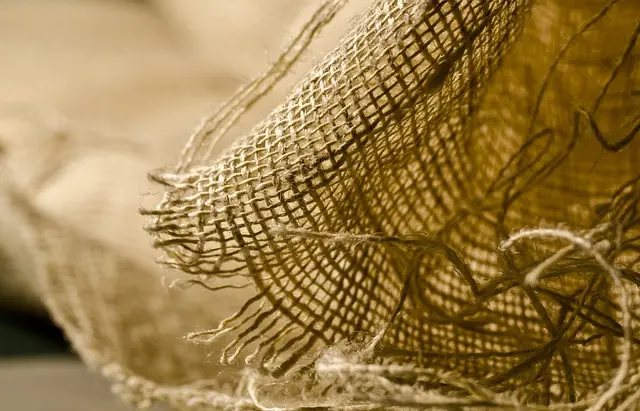Muscle soreness post-exercise is commonly caused by muscle fiber micro-tears and the body's repair process known as DOMS. Kratom, from the Mitragyna speciosa tree, may help alleviate this soreness through its active compounds, mitraphylline and 7-hydroxymitragynine, which potentially interact with opioid receptors for analgesic effects. Strains like Maeng Da and Bali are particularly effective for muscle aches, offering both pain relief and calming properties. White Vein Kratom strains can provide an energy boost alongside pain relief, making them suitable for daytime use. It's essential to use kratom responsibly, with appropriate medical guidance, due to its potency and potential interactions with other substances. Individuals should consult healthcare professionals before using it for muscle soreness relief, considering its long-term effects and personal health status. Proper dosing and storage, along with being aware of potential side effects like nausea or constipation, are key to safely using kratom for muscle soreness relief. Regular breaks in use can help mitigate the risk of physical dependence, ensuring user safety and well-being.
Muscle soreness, a common occurrence post-exercise, can hinder one’s recovery and training progress. Exploring natural remedies, this article delves into the potential of kratom supplements as an alternative muscle soreness relief strategy. Kratom, derived from the Mitragyna speciosa tree, has been traditionally used for its analgesic properties. We will examine how certain strains may offer relief and discuss safety considerations to ensure effective and responsible use. Join us as we navigate the intersection of athletic recovery and herbal supplementation, focusing on muscle soreness relief with kratom.
- Understanding Muscle Soreness and Kratom's Role in Relief
- Effective Kratom Strains for Alleviating Muscle Soreness
- Safety Considerations and Best Practices When Using Kratom for Muscle Soreness
Understanding Muscle Soreness and Kratom's Role in Relief

Muscle soreness is a common experience, particularly after intense physical activity or exercise. It often arises from micro-tears in muscle fibers, a natural response to stress and repair. This process, known as delayed onset muscle soreness (DOMS), can lead to significant discomfort, hindering an individual’s ability to engage in subsequent activities. Kratom, a supplement derived from the leaves of Mitragyna speciosa, has garnered attention for its potential role in providing relief from muscle soreness. The active compounds found in kratom, particularly mitraphylline and 7-hydroxymitragynine, are believed to interact with the body’s opioid receptors, offering analgesic effects that may alleviate pain associated with muscle exertion. Users often report a reduction in soreness when taking kratom, suggesting its efficacy as a natural remedy for muscle soreness relief. It is important to note that while kratom may provide temporary relief, it should be used responsibly and in accordance with appropriate dosing guidelines, as the long-term effects and interactions with other substances can be significant. Additionally, individuals considering kratom for muscle soreness should consult with a healthcare provider to ensure safety and suitability based on their unique health profile.
Effective Kratom Strains for Alleviating Muscle Soreness

Muscle soreness can be a debilitating condition, often resulting from intense physical activity or injury. Kratom, a tropical evergreen tree native to Southeast Asia, has garnered attention for its potential role in muscle soreness relief. Among the various strains of kratom, certain ones stand out for their alkaloid profile that may aid in reducing muscle discomfort. Maeng Da Kratom is renowned for its potent analgesic properties, which can effectively soothe aching muscles and offer relief from chronic pain associated with soreness. This strain is commonly found in high-quality kratom supplements and is often recommended for individuals seeking natural remedies for muscle soreness relief with kratom.
Another effective strain is Bali Kratom, which has been traditionally used to relieve pain and discomfort. It contains a balanced alkaloid composition that can help in managing mild to moderate levels of muscle soreness. Bali Kratom is known for its calming effects, which can further enhance the relief experience by reducing stress and promoting a sense of well-being. For those looking for a more stimulating effect alongside pain relief, White Vein Kratom strains like the Borneo or Indo varieties can provide an energizing boost while still delivering significant muscle soreness relief with kratom. These strains are known to uplift the mood and increase mental clarity, which can be beneficial when dealing with the discomfort of muscle soreness. Always consult with a healthcare professional before incorporating kratom into your regimen to ensure safety and appropriateness for your specific health needs.
Safety Considerations and Best Practices When Using Kratom for Muscle Soreness

When incorporating kratom as a supplement for muscle soreness relief, it is imperative to approach its use with caution and informed understanding. Kratom, derived from the leaves of Mitragyna speciosa, has been traditionally used in certain cultures for its various effects, which may include pain relief. However, due to its complex interactions with the body’s opioid receptors, it is crucial to adhere to safety considerations and best practices when using this substance. Firstly, individuals should start with a low dose to gauge their sensitivity before considering higher doses for muscle soreness relief. It is also advisable to consult with a healthcare provider before integrating kratom into any pain management regimen, especially if one has pre-existing health conditions or is concurrently taking other medications.
The choice of kratom strain can significantly influence its efficacy and safety for muscle soreness relief. Strains like Maeng Da and Bali are often favored for their balanced effects, while others, such as White Vein kratom, are more stimulating and may be better suited for daytime use. Users should also be aware of the potential side effects, which can include nausea, dizziness, and constipation, and should not exceed recommended dosages. Additionally, long-term use of kratom may lead to physical dependence, and thus it is important to follow a regimen that ensures periodic breaks to mitigate the risk of adverse outcomes. Proper storage of kratom powder, away from moisture and heat, will help maintain its quality and potency over time. By following these guidelines and staying informed about the latest research on kratom’s effects, users can responsibly explore muscle soreness relief with kratom while prioritizing their health and well-being.
Muscle soreness can be a significant hindrance to individuals engaging in physical activities or those recovering from injuries. The article has explored various aspects of muscle soreness and how kratom supplements may offer relief. We’ve delved into the mechanisms behind muscle soreness, the potential benefits of kratom strains such as Maeng Da and Bali for alleviating discomfort, and the importance of adhering to safety measures and best practices when incorporating kratom into one’s wellness regimen. While kratom shows promise in providing muscle soreness relief, it is imperative to approach its use with caution, considering individual sensitivities and legal regulations. Users are encouraged to consult healthcare professionals before integrating kratom into their routine for the best outcomes and safe experiences. With careful consideration and proper guidance, kratom may serve as a valuable tool in managing muscle soreness effectively.






